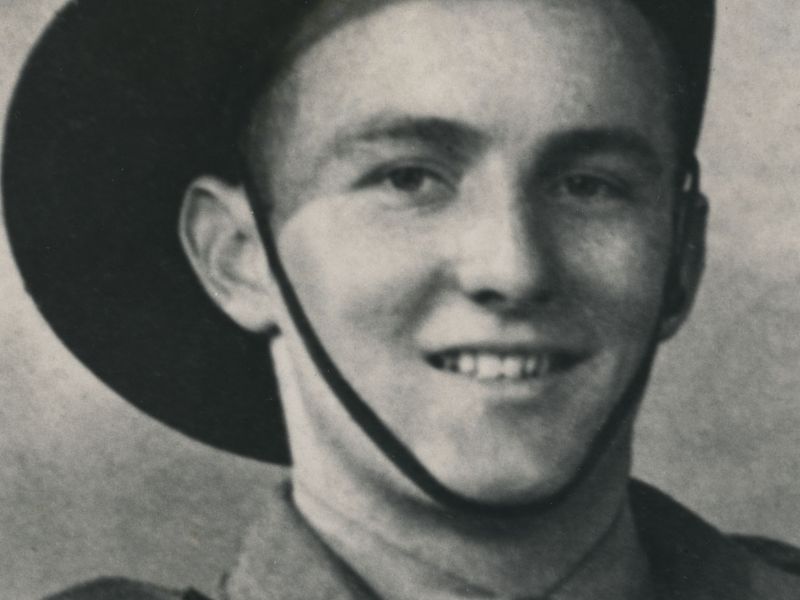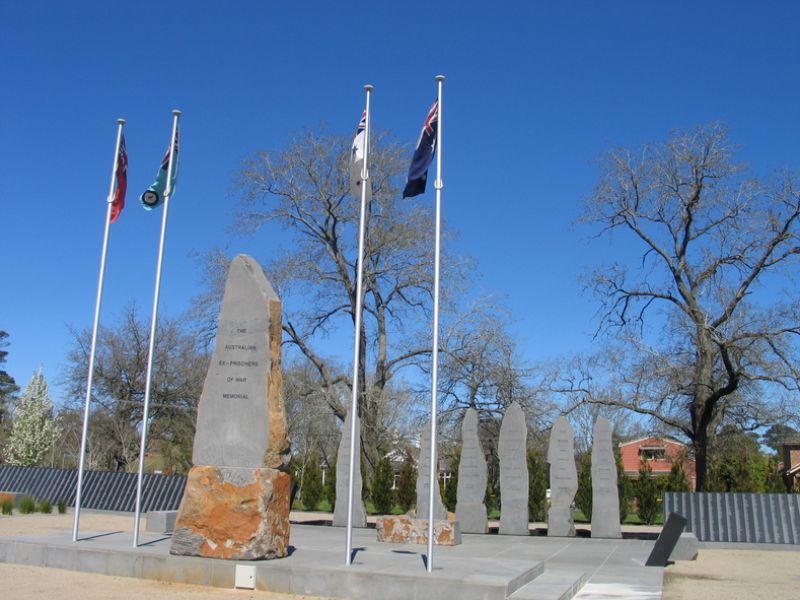Robert Hugh Hanna
Robert was born on the 26th of July 1922 at Albury, New South Wales. He was one of four boys of Hugh Gordon and Lillian Bessie (née Kiddle) Hanna of Walwa, Victoria.
Robert took the train down to Caulfield, a suburb of Melbourne, in late December of 1941. When it was his turn to enlist he handed the recruiting Sergeant a small piece of paper. To the Sergeants astonishment of the Sergeant it was a cheque for £40 from his Robert’s father, High, a veteran of the First World War. The cheque was to cover the cost of Roberts equipment and uniform! Upon completing his attestation form, having his photograph taken and taking the oath of enlistment, he was promptly given two weeks leave without pay.
After returning to his unit at the end of his leave, Private Robert Hanna VX69754 was transferred to the 12th Training Battalion at Darley, near Bacchus Marsh. After two weeks of training he was promoted to Lance Corporal and sent to Queenscliff for a further two weeks. He was posted to the 39th Battalion on the 16th of March 1942. The battalion embarked on the SS Taroona at the Port of Melbourne on that very day. The journey to Port Moresby took ten days.
On the 8th of April, Robert was sent to the 8th Military District Cypher School. Almost two weeks later he was transferred from the 39th Battalion, the Australian New Guinea Administrative Unit or ANGAU. This unit was a unit of the Australian Army that superseded the civilian government of Papua New Guinea early in 1942. It would administer the area until mid-1946.
Robert was stationed at the administrative outpost of the Ambasi Government Station along with two other ex-39th Battalion soldiers, Private R.J. Holyoake and Corporal H.D. Palmer, as well as two members of the PIB (Papuan Infantry Battalion), Lieutenant A.A. Smith and Sergeant L.R. Hewitt. On the 21st of July they picked up a wireless message from Sergeant Harper at the Government Station at Buna reporting that they were being shelled by Japanese naval forces. This was the first indication of a Japanese landing in the Buna, Gona and Sanananda area. The message wasn’t getting through to the authorities at Port Moresby. They somehow managed to relay the message to Port Moresby, even though they were further west than Buna from Moresby. The five then decide that it was time to abandon Ambasi before they were cut off by the advancing Japanese.
After five days of battling through thick jungle they managed to join up with five American airmen who had been shot down while on a bombing raid over Buna. Later in the day they came across a group of civilians, who included Father James Benson and Sisters May and Mavis. They decided to travel together although they knew, from villagers they came across, that Japanese troops were not far away.
At last light on the day that they had joined forces, tragedy happened. They were ambushed by a Japanese patrol. As bullets whizzed around them they scattered, rushing through the jungle. As they ran they tripped over roots and became entangled in vines. Two days later the soldiers, airmen and Sisters (Father Benson had become separated from the main group) found themselves just outside the village of Manugulasi, when they ran into another Japanese patrol. Robert, his two ex-39th Battalion companions and Sergeant Hewitt were hit and killed on the spot. Three of the American airmen were wounded and then subsequently bayoneted to death. Lieutenant A.A. Smith and the two Sisters managed to escape but were shortly betrayed by a village councillor who they assumed to be friendly. They were captured, interrogated and then murdered.
Robert was initially reported as being Missing in Action with the family being notified in early August. His body, and those of Private Holyoake and Corporal Palmer, were discovered in early November of 1943 and re-interred in the Port Moresby (Bomana) War Cemetery.
Robert is remembered on the Australian War Memorial Roll of Honour, the Ballarat Australian Ex-Prisoners of War Memorial, and the Labuan Memorial on the island of Labuan. For his service, he was awarded the 1939-1945 Star, the Pacific Star, the Defence Medal, the War Medal 1939-1945 and the Australian Service Medal 1939-1945.

 Stephen Learmonth
Stephen Learmonth